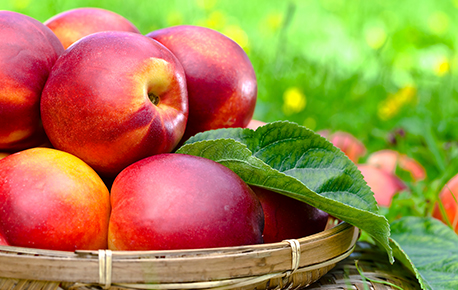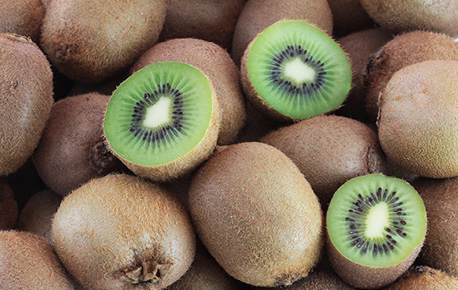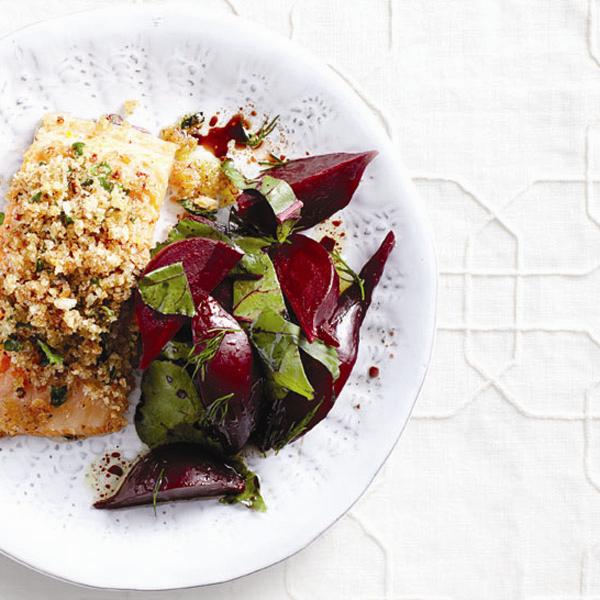By Prairie-based, Professional Home Economist Getty Stewart
Want to capture the flavour of summer to enjoy all year long? Go grab extras of your favourite seasonal fruits and vegetables and freeze them. Freezing is one of the quickest and easiest ways to preserve fresh produce. It requires minimal equipment and time, maintains high nutrient value, and allows for easy use in recipes. When well-sealed and stored at a consistent -18°C (0°F) in the freezer, the quality of frozen produce can last 6-12 months or longer.
To ensure the best colour, flavour, and texture here are some general guidelines.

1. Pick the Best Produce
Choose fresh, ripe, high-quality fruits and vegetables and freeze them as soon after harvesting or purchasing as possible. Enjoy imperfect fruits and veggies in soups or fruit compote.
2. Keep Moisture Out
Excess moisture, whether from washing or condensation, leads to ice crystals which reduce the texture, flavour, and overall quality of frozen food. To reduce moisture:
- Dry produce well after washing to remove any surface moisture.
- Cool blanched vegetables thoroughly before freezing.
- Open and close freezer quickly to avoid warm air rushing in.
- Reseal and return unused portions to the freezer quickly.

3. Limit Air Space
Extra air in freezer containers can cause freezer burn – dry, grayish-white spots. This makes food tough, dry, and generally unpleasant. It’s not unsafe to eat, but it’s something you want to avoid by:
- Using freezer-grade containers to prevent air and moisture from getting in.
- Choosing the right-sized container for the amount of food you have.
- Leaving only enough air space to allow for expansion in hard-sided containers.
- Removing as much air as possible from freezer bags. Use a vacuum sealer or insert a straw into a small opening in the zipper seal to suck out the air for an almost vacuum-sealed package.
4. Blanch Vegetables

Imagine freezing the sweetest, juiciest, most tender green peas only to have them taste starchy and mealy after several months – that’s aging enzymes at work. Aging enzymes are present in all vegetables and freezing does not stop them, blanching does. That’s why blanching vegetables (boiling for 2-5 minutes) is strongly recommended, despite what you may read in popular media. For detailed blanching times for different vegetables, check this guide for blanching and freezing vegetables.
You can omit blanching IF you know you’ll use your frozen veggies within 3 months before the effects of the aging process become noticeable.
5. Prepare Fruits for Freezing
Fruits do not need to be blanched before freezing. Simply sort, pit, peel, wash, cut, dry, and freeze. For extra convenience, freeze fruits on a baking sheet for several hours before transferring to a freezer container. This way, you can easily pour out only the amount you need and avoid clumps of frozen fruit.
6. Specific Tips for Common Fruits and Vegetables
Here’s how to freeze some common fruits and veggies:

Tomatoes
Tomatoes can be frozen raw or cooked. They can be whole, chopped or pureed depending on how you plan to use them. Peeling is optional but the peel will separate from tomatoes when thawed.
For raw, peeled tomatoes use a paring knife to make a small X on the bottom of each tomato. Dip tomatoes in boiling water for 30 seconds until the skins split, transfer to ice water bath and peel off the skins. Freeze whole or chop, removing the core if you wish.
Use these tomatoes just like canned tomatoes in your favourite soups, stews and sauces.
Apples, Pears, Peaches, Plums
Fruits like apples, pears, peaches and plums are best frozen sliced or diced with or without the peel. To prevent browning, place slices in a solution of water (1 quart) and lemon juice (1/4 cup) while prepping. Dry well and freeze on lined baking sheet then transfer to airtight bag or container.
Sliced frozen fruit is perfect for fruit compotes or baked goods like crisps, pies, muffins and loaves. Try this Apple Blueberry Compote substituting fresh fruit with frozen.
Berries
Handle berries gently when sorting and cleaning berries. Dry as much as possible by patting dry and letting air dry for a few hours before transferring to lined baking sheet to freeze. Once frozen transfer to airtight bag or container. Try them in our Quinoa Berry Muffins.
Frozen berries are great in smoothies, on top of yogurt or oatmeal, sauces or compotes and baked goods like these Quinoa Berry Muffins.
Kale, Spinach, Swiss Chard

Dark leafy greens are much tougher than their light leafy green cousins and can handle being frozen. If you like using them for smoothies and can use them within three months, simply wash, dry and freeze. For optimum, long-lasting colour, flavour, texture and nutrients it is best to blanch these greens. Boil kale and Swiss chard leaves for 2-3 minutes and spinach for 1-2 minutes before transferring to an ice bath. Drain well and freeze in convenient portion sizes – using ice cube trays, lined muffin tins, bags or containers.
Add a cube or two of frozen dark leafy greens to just about any smoothie, soup, casserole, or pasta sauce for an added boost of flavour and nutrients. You can also use frozen tomatoes and frozen dark leafy greens in this Swiss Chard and Tomato Pasta. Start by sautéing the onions and garlic, add frozen tomatoes with broth, tomato paste, and anchovy paste and let simmer until thickened. Add frozen leafy greens in last 3-5 minutes before adding pasta.
7. Special Considerations
Not all fruits and veggies freeze equally well. Some like potatoes become gritty while some like lettuce and cucumbers are so watery they become mushy puddles. These veggies are not recommended for freezing at all. Others, like bananas, melons and zucchini turn into something that’s great for smoothies, granita, muffins, soups or stews where texture is less of a concern. It’s best to freeze these with a specific recipe in mind.
Freezing fresh, seasonal produce is a fantastic way to preserve the taste of summer and ensure you have access to high-quality fruits and vegetables throughout the year. Happy freezing!
About the author

Getty Stewart is a professional home economist sharing tips and recipes for enjoying local, seasonal homemade food at www.gettystewart.com.



